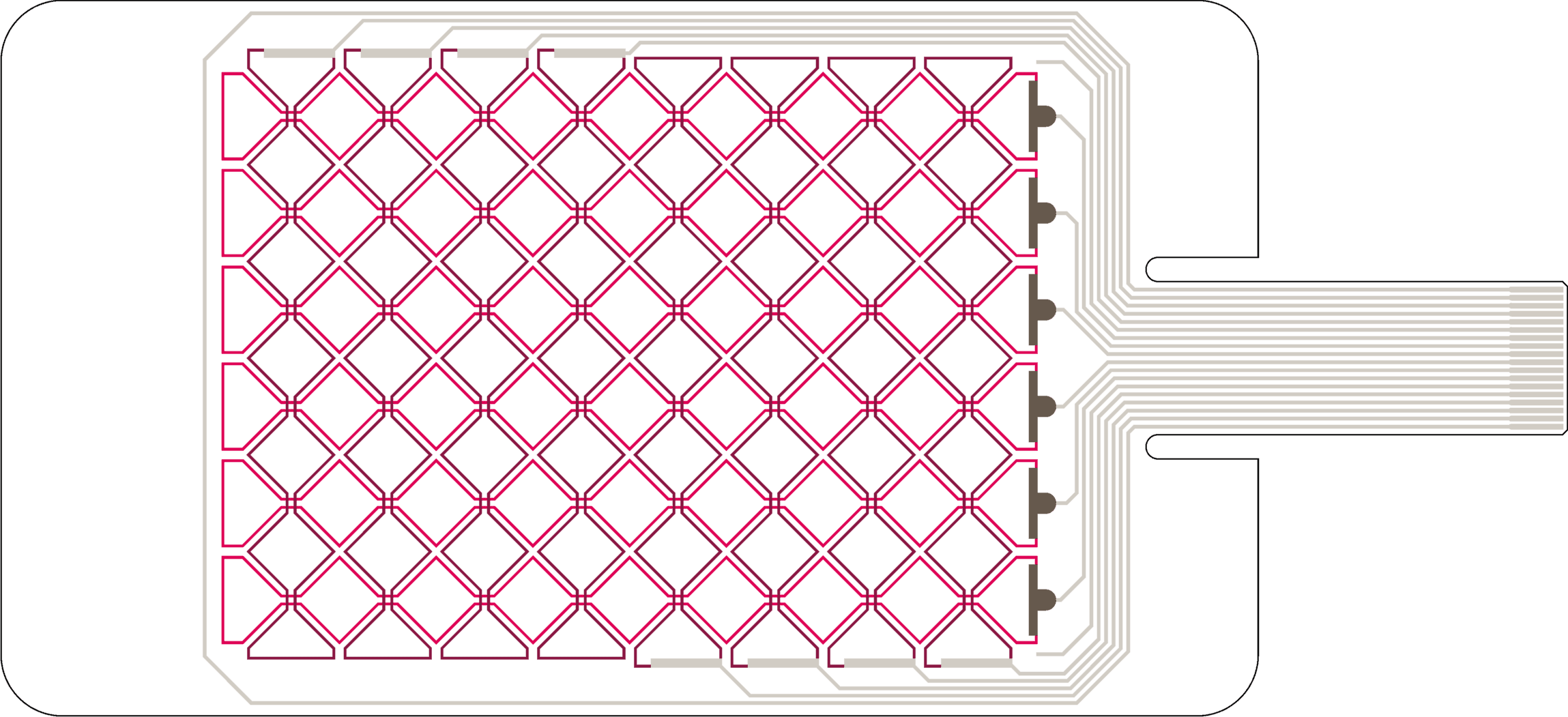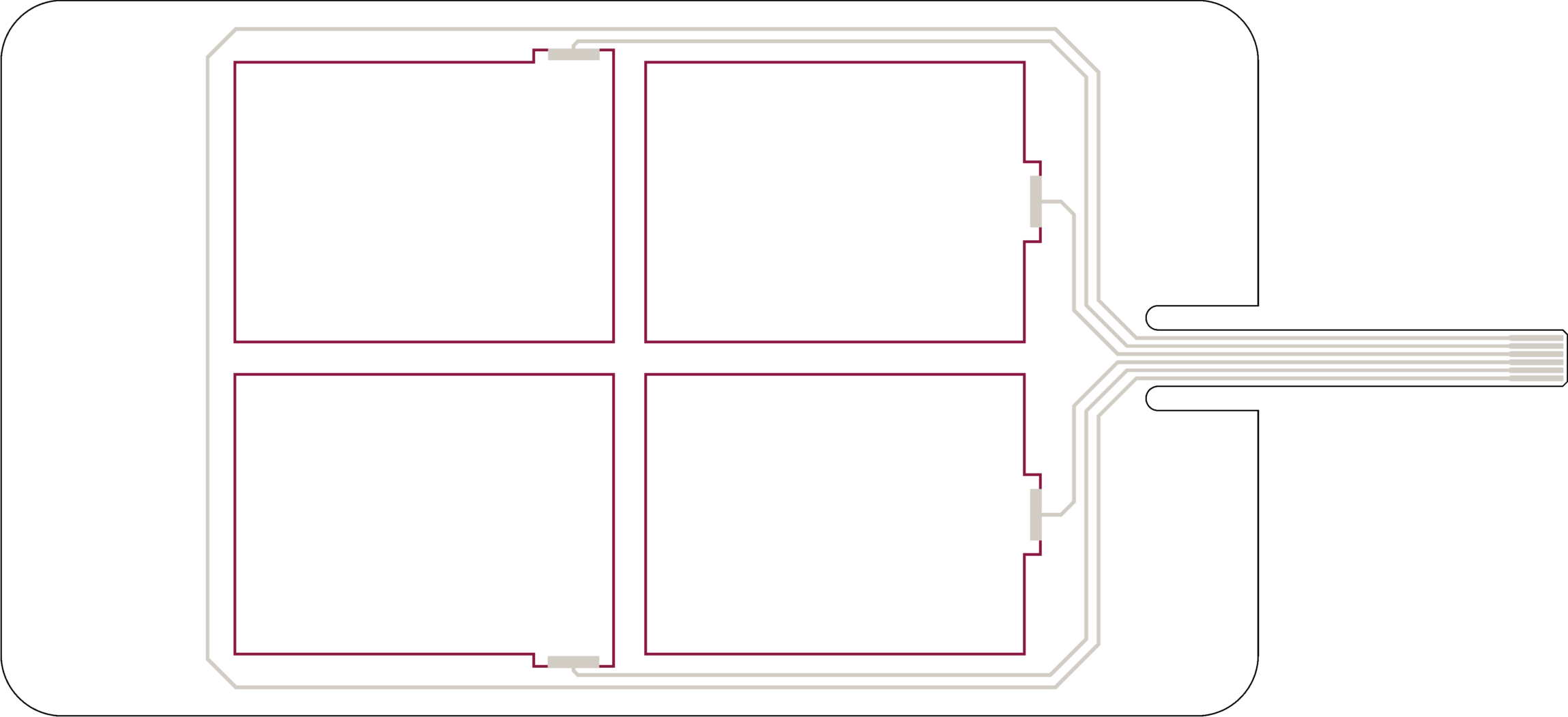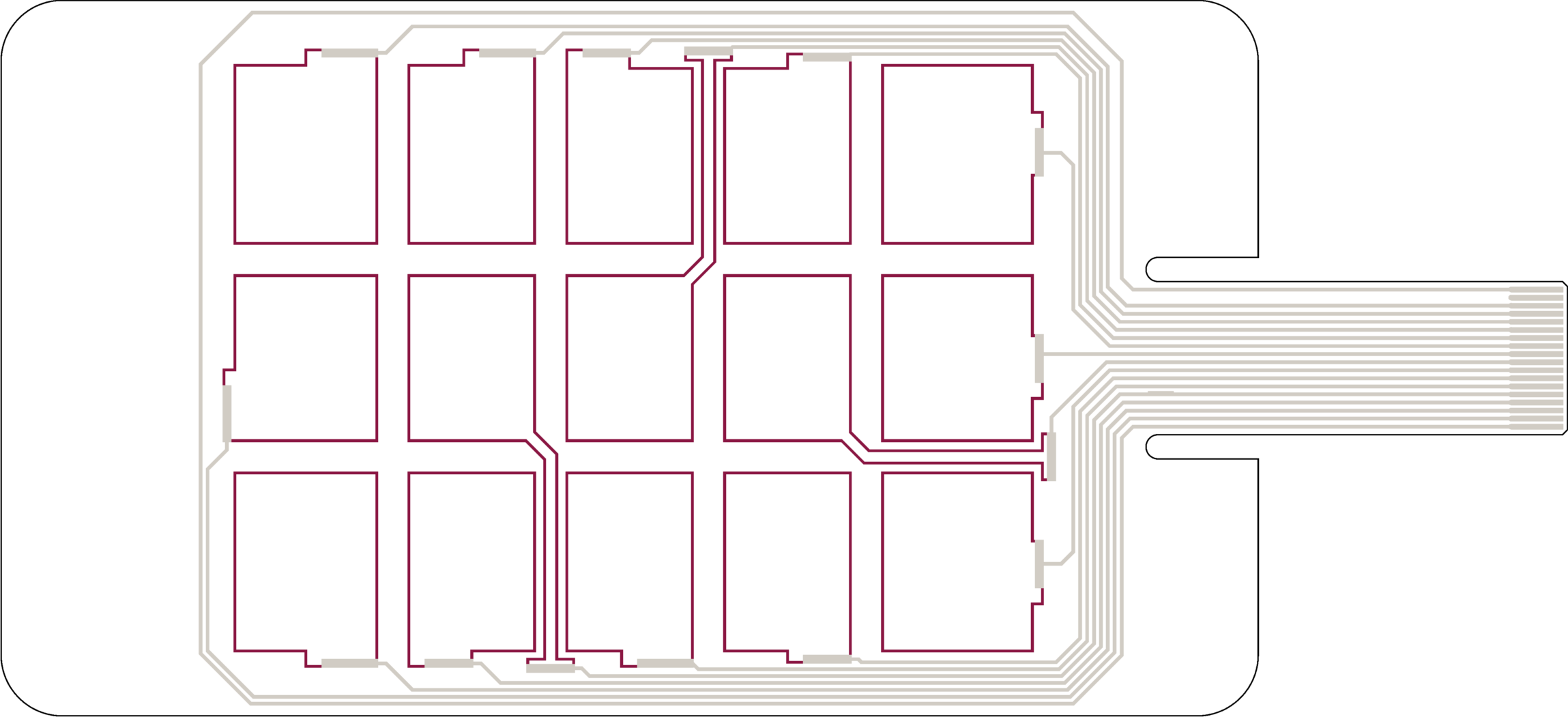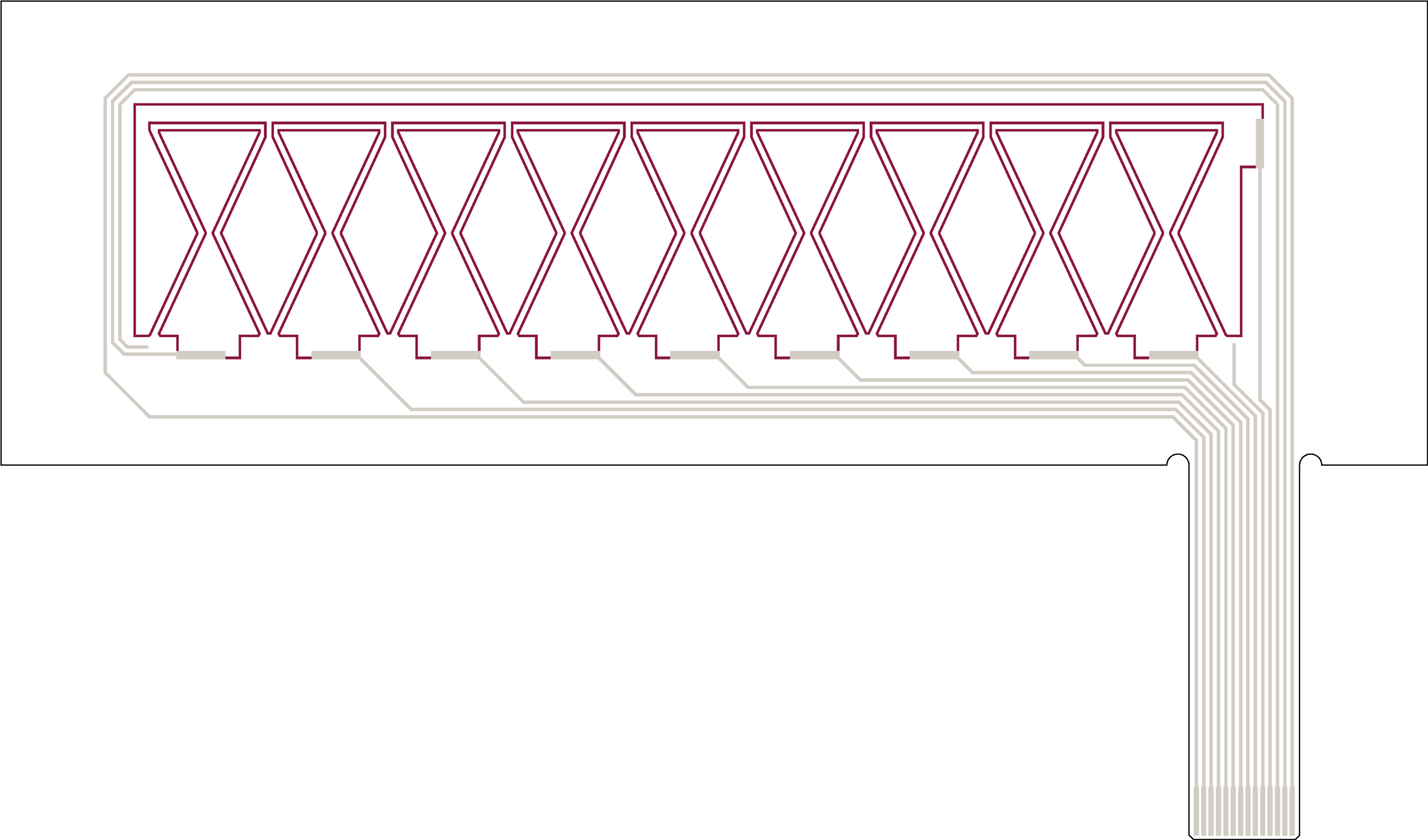When you consider adding a capacitive touch sensor to your application, you have options for how that sensor operates to achieve the functionality that is just right for your application. There is no one size fits all solution.
Even though a capacitive sensor is transparent, there are clear conductive layers on that sensor that are patterned to form the electrodes which interact with the user. This is the material that detects where the sensor has specifically been touched. With a custom sensor, you can choose the electrode pattern that senses the touch. This choice is driven by the end-use application and requirements of the controller.
Matrix

This is the traditional touch sensor style that is most familiar to people. Pictured is the industry standard double diamond pattern, this allows for touch points anywhere on the sensor.
- Supports gestures
- User-friendly
- Unlimited programming options
Discrete


Discrete sensors provide an economical and sometimes more robust alternative to the matrix style sensor.
- Cost effective option
- More conducive to harsh environment applications
- More consistent and reliable
- Helps to avoid false touches
- Requires less development time
- Easier programming of software
Slider

Depending on the end use, this can be a very effective design for allowing a user to slide along the screen for a variable selection, or to swipe between menus of icons. More than one slider can be stacked on the display if the application is a good fit. For many industrial and appliance applications, a short and wide display can be useful – and a slider sensor can be a great solution.
- Cost effective option
- Supports gesture, such as swipe
- Well suited for long, narrow displays
- Good compromise between matrix style and descrete
{{cta(‘bae4e3b9-5903-42c8-9445-6506d29b02a8’)}}
